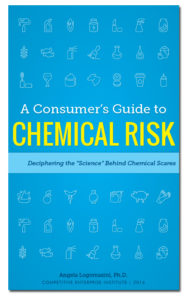One tool designed to help assess the state of science on an issue involves consideration of the weight of the evidence. In that case, rather than mere peer review of a single study, scientists attempt to consider the full body of research on an issue, emphasizing the best quality studies—those of significant size, most significant findings, and best methodologies—and assessing the most likely conclusions. When it comes to setting regulatory standards for science affecting public policy, it makes sense to call for best available, peer-reviewed, science that focuses on a weight-of-the-evidence test.
National Cancer Institute (NCI) researchers offer some insights on what factors help make research on an issue most compelling (1). A summary of their key points is as follows:
- Strength of the association. Is the relationship strong or weak? For example, did a high percentage of subjects exposed to a chemical develop cancer compared to a low number in the control group, or was the percentage so low that the number could be attributed to mere chance? As noted, relative risk numbers of 2, 3 and even 4 are not particularly compelling despite headlines suggesting otherwise.
- Consistency of the association. Do many studies find this association or is the finding an aberration?
- Reproducibility. If other researchers conduct a study with the same data, do they consistently come up with the same conclusions?
- Dose-response relationship. Is the dose that humans experience large enough to pose a serious risk?
- Order of events. The association must be temporally correct—that is, the alleged cause must precede the effect. For example, if an illness occurs before
- exposure to a chemical, the chemical cannot be blamed for the illness.
- Biological plausibility. The finding is stronger if there is a good biological explanation as to the link.
Browse the terms on the sidebar of this webpage for more details and/or download a copy of A Consumer’s Guide to Chemical Risk: Deciphering the “Science” Behind Chemical Scares.
(1) National Cancer Statistics Branch, National Cancer Institute, Cancer Incidence and Survival among Children and Adolescents: United States SEER Program1975-1995 (Washington, D.C.: National Institutes of Health, 1999).


